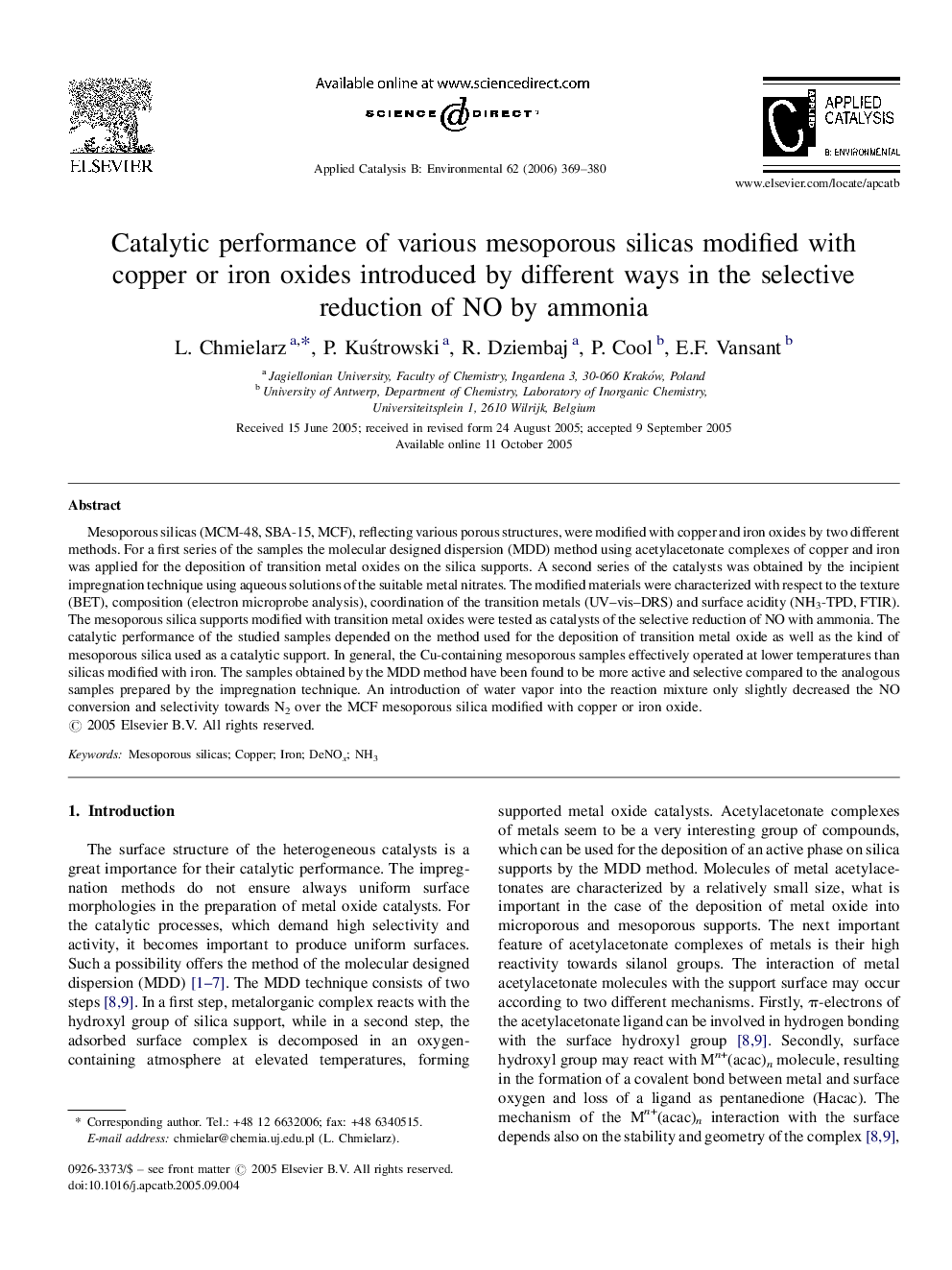| Article ID | Journal | Published Year | Pages | File Type |
|---|---|---|---|---|
| 49077 | Applied Catalysis B: Environmental | 2006 | 12 Pages |
Mesoporous silicas (MCM-48, SBA-15, MCF), reflecting various porous structures, were modified with copper and iron oxides by two different methods. For a first series of the samples the molecular designed dispersion (MDD) method using acetylacetonate complexes of copper and iron was applied for the deposition of transition metal oxides on the silica supports. A second series of the catalysts was obtained by the incipient impregnation technique using aqueous solutions of the suitable metal nitrates. The modified materials were characterized with respect to the texture (BET), composition (electron microprobe analysis), coordination of the transition metals (UV–vis–DRS) and surface acidity (NH3-TPD, FTIR). The mesoporous silica supports modified with transition metal oxides were tested as catalysts of the selective reduction of NO with ammonia. The catalytic performance of the studied samples depended on the method used for the deposition of transition metal oxide as well as the kind of mesoporous silica used as a catalytic support. In general, the Cu-containing mesoporous samples effectively operated at lower temperatures than silicas modified with iron. The samples obtained by the MDD method have been found to be more active and selective compared to the analogous samples prepared by the impregnation technique. An introduction of water vapor into the reaction mixture only slightly decreased the NO conversion and selectivity towards N2 over the MCF mesoporous silica modified with copper or iron oxide.
